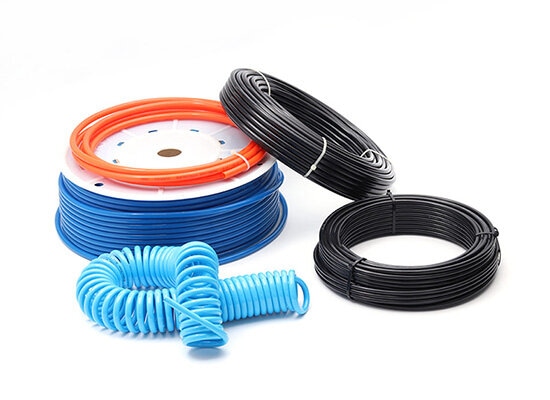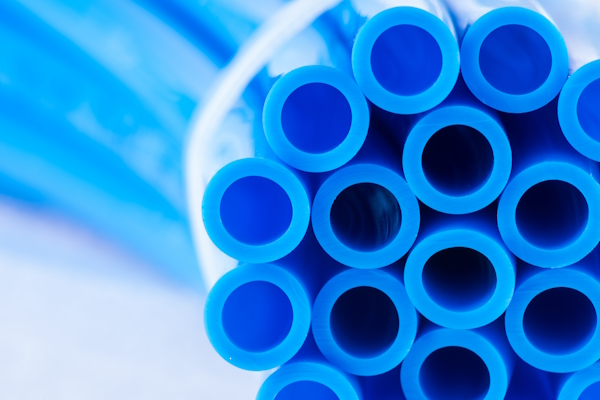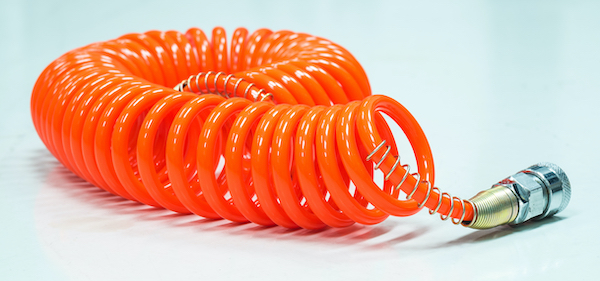- sales@fokca.com info@fokca.com
- WhatsApp: +86 150 5749 1870

Air Hose and Tubings Explained
Air hoses and tubing are vital components in pneumatic systems, responsible for transporting compressed air from storage to where it is needed. These flexible conduits are designed to ensure the smooth flow of air, delivering it to tools, machinery, actuators, and other equipment that rely on compressed air for operation.
Air hoses and tubing are crucial elements in any pneumatic system. They facilitate the transport of compressed air from the compressor to various tools,
machinery, and components. These flexible components enable smooth operation, ensuring the effective functioning of pneumatic equipment with minimal energy loss.
◆ Rubber Hoses: Known for their flexibility and resistance to abrasion, rubber hoses are suitable for general industrial use.
They are commonly used in construction sites, automotive shops, and manufacturing environments due to their durability and resistance to wear.
◆ Polyurethane Tubing: Offering superior flexibility and a lightweight design, polyurethane tubing is ideal for applications requiring high flexibility and tight bends.
It is often used in applications where space is limited and for systems with frequent movement.
◆ PVC Tubing: Lightweight and cost-effective, PVC tubing is commonly used in low-pressure pneumatic systems.
It is ideal for non-abrasive environments and applications where flexibility is not as critical.
◆ Nylon Tubing: Known for its high strength and rigidity, nylon tubing is often used in applications that require higher pressure ratings and where mechanical strength is a priority.
In pneumatic systems, the efficient distribution of compressed air is crucial for the optimal performance of machinery and tools.
The air hose and tubing are responsible for transporting the compressed air from the compressor to the tools, valves, actuators, and other components.
◆ Air Compressor to Distribution Points:
The process begins at the air compressor, which generates the compressed air. The air is then transported through the air hose or tubing to distribution points in the system.
The choice of hose or tubing at this stage is important for ensuring that the air reaches all parts of the system without significant pressure loss.
◆ Maintaining Consistent Pressure:
Once the compressed air enters the system, the air hose or tubing helps maintain consistent air pressure as it travels to various tools and actuators.
Any degradation in pressure due to improper hose selection or leaks can result in reduced tool performance or inefficiency.
◆ Flexible Routing:
Pneumatic systems often require flexibility in routing air through different machine parts. Tubing made of flexible materials like polyurethane or rubber can bend and curve easily,
allowing the compressed air to reach components positioned in tight or complex spaces.
◆ Connection to Tools and Actuators:
At each distribution point, the air hose or tubing connects to specific pneumatic tools or actuators. This is where air pressure is used to perform work,
such as driving pneumatic drills, cylinders, or valves. The right hose ensures optimal air flow to these points, enhancing tool efficiency and safety.
◆ Exhaust and Pressure Regulation:
Some systems also require exhaust tubing, which allows air to escape from the system after use. Pressure regulation is another critical aspect,
ensuring that air is distributed at the correct pressure for each tool or actuator.
◆ End-to-End Flow Efficiency:
The ideal air hose or tubing ensures minimal air resistance, preventing unnecessary energy loss. Properly chosen and installed tubing minimizes friction,
reduces pressure drops, and ensures that the system operates at peak efficiency.

The final step in an air supply system is connecting to pneumatic parts that manage the main air flow, such as valves, cylinders, and pressure regulators.
Pneumatic hoses and tubes connect to appliances via fittings, specifically designed to ensure a secure and leak-proof connection.
These fittings come in various types, including push-to-connect, compression, and threaded fittings.
Push-to-connect fittings offer quick installation and removal, ideal for systems requiring frequent modifications.
Compression fittings create a strong seal for high-pressure applications. Threaded fittings provide a secure connection in systems that do not move.
Hoses can be constructed from multiple layers, including a nylon braid sandwiched between the inner and outer layers.
This design enhances durability and ensures the hose can withstand various operational challenges. The inner material must be resistant to oils and condensate,
while the outer material should protect against atmospheric conditions.
| Material | Thermoplastic Polyurethane |
| Applicable medium | Air, Water, Vacuum |
| Embient and fluid temperature | -20℃~+80℃ |
| Hardness Shore A | 95A ASTM D-2240 |
| Tensile strength(kg/cm2) | 600 ASTM D-638 |
Ultimate elongation(%) | 490~590 ASTM D-638 |
| Taber abrasion(mg) | 30~40 ASTM D-1044 |
| Tear strength(kg/cm2) | 155 ASTM D-732 |
This section gives detailed descriptions of the factors to consider when choosing a hose or tube for a pneumatic system.
◆ Operating pressure: Know the maximum operating pressure of the system. Hoses and tubes, including air compressor hoses, have different pressure ratings.
Choosing one that cannot withstand the system's pressure can cause failures.
◆ Temperature range: Consider the temperature range within which the system will operate. Some materials can become brittle and crack in cold temperatures,
while others may soften and deform under high heat.
◆ Media: Identify the type of media (air, water, oil, etc.) that will flow through the hose or tube. Some materials are better suited for certain types of media due to chemical compatibility.
For instance, an air hose is specifically designed for air media.
◆ Environment: Consider external elements such as exposure to chemicals, UV light, abrasion, and extreme temperatures, as they can impact the lifespan and performance of a hose or tube.
◆ Flexibility: Hoses, like air line hoses, are generally more flexible than tubes, making them ideal for moving parts or applications where the hose needs to be routed around obstacles.
◆ Cost: Tubes are often less expensive than hoses and are a cost-effective solution for applications where flexibility is not a critical factor.
◆ Installation: Consider the ease of installation. Tubes can be easier to install in tight spaces due to their rigidity.

◆ Inner diameter (ID): The ID should be large enough to handle the flow rate without causing excessive pressure drop but not so large as to be unnecessarily bulky or expensive.
When choosing between 1/4 vs 3/8 air hose, consider the flow requirements and pressure drop.
◆ Length: Consider the length needed for the application, including allowances for bending and routing.
Avoid unnecessary length that can lead to pressure drops and potential entanglement or damage.
An air compressor hose size chart can be helpful in determining the appropriate length and diameter.
◆ Anti-static properties: In environments where static electricity is a concern, consider hoses or tubes with anti-static properties.
◆ Customization: For highly specialized applications, manufacturers can produce custom hoses and tubing that meet specific dimensions,
pressure ratings, and material requirements. This includes hoses with several layers, reinforced walls for extra strength,
or built-in conductive wires for static discharge in areas where static electricity might be dangerous.
◆ Standards and certifications: Pneumatic hoses and tubing must often meet specific industry standards and certifications to ensure they are safe and effective for their intended use.
These can include standards related to food safety, medical use, or flame resistance, among others.
◆ Safety factors: Pneumatic hoses and tubing are designed with a safety factor, typically ranging from 3:1 to 4:1.
This means that the burst pressure of the hose or tube is three to four times higher than the maximum operating pressure.
This safety factor is crucial for preventing accidents and ensuring the system's integrity under unexpected conditions.
Perhaps our company's Pneumatic Push In Fitting, Pneumatic Quick Couplings, Pipe Fitting And Connectors, Pneumatic Muffler&Silencer products will also be favored by you.
Links: www.fescolo.com(Pneumatic)
FOKCA ©1998-2025 All Rights Reserved Sitemap